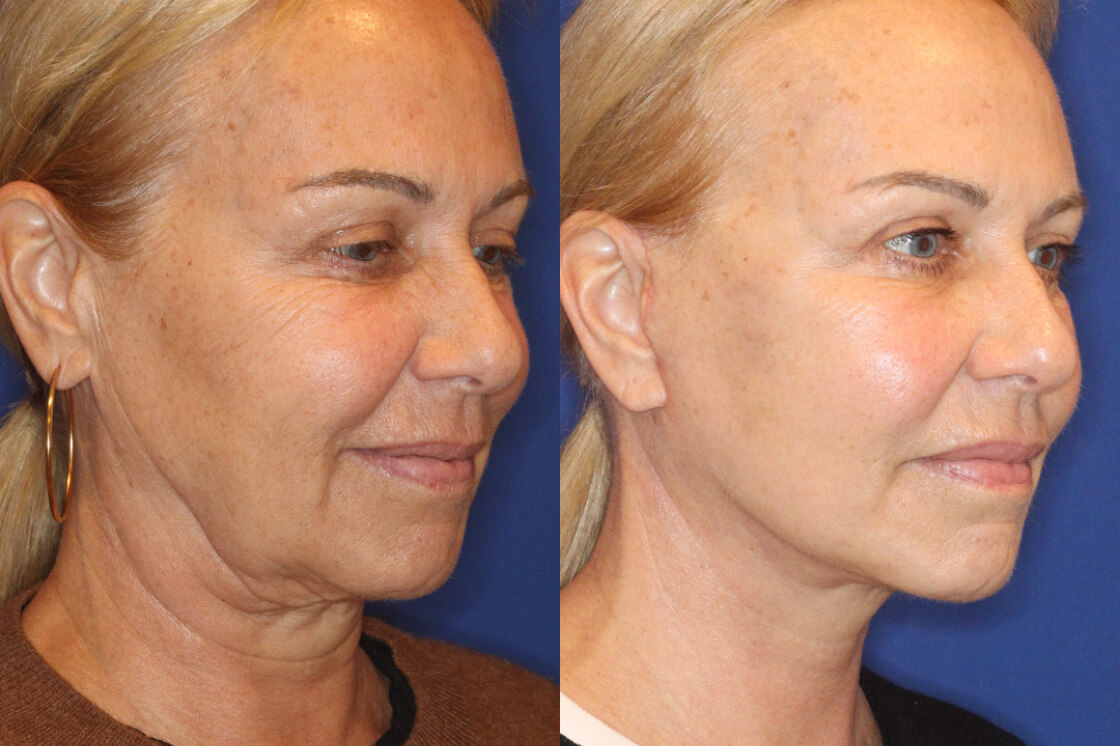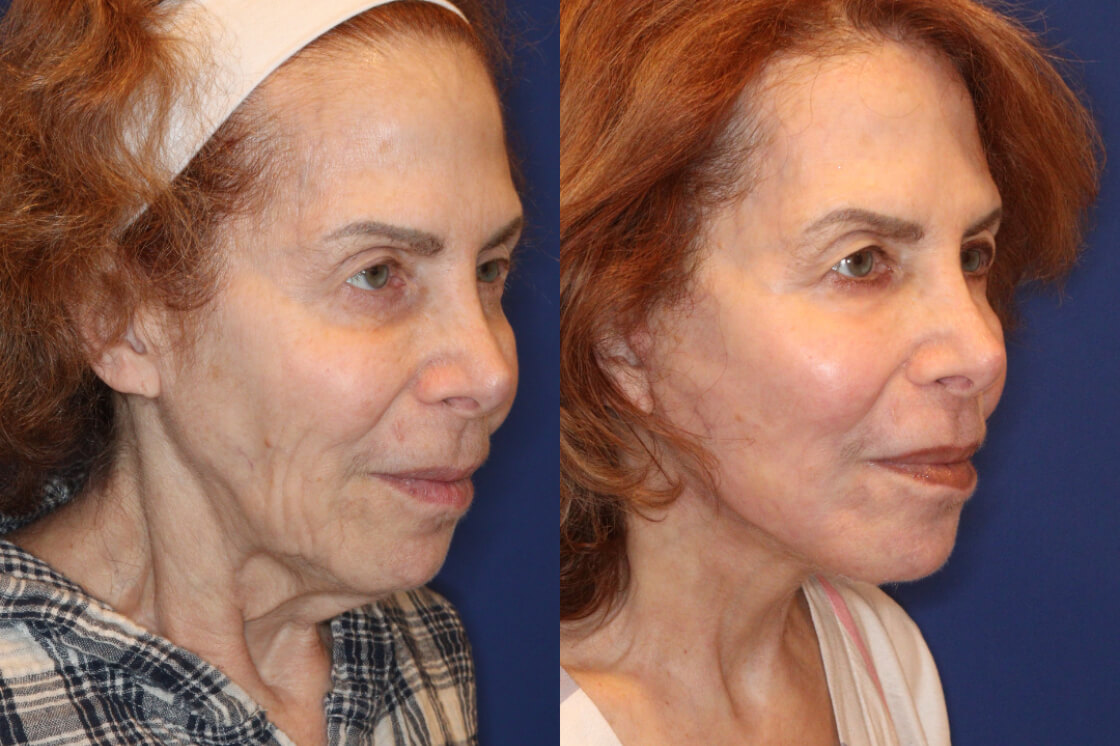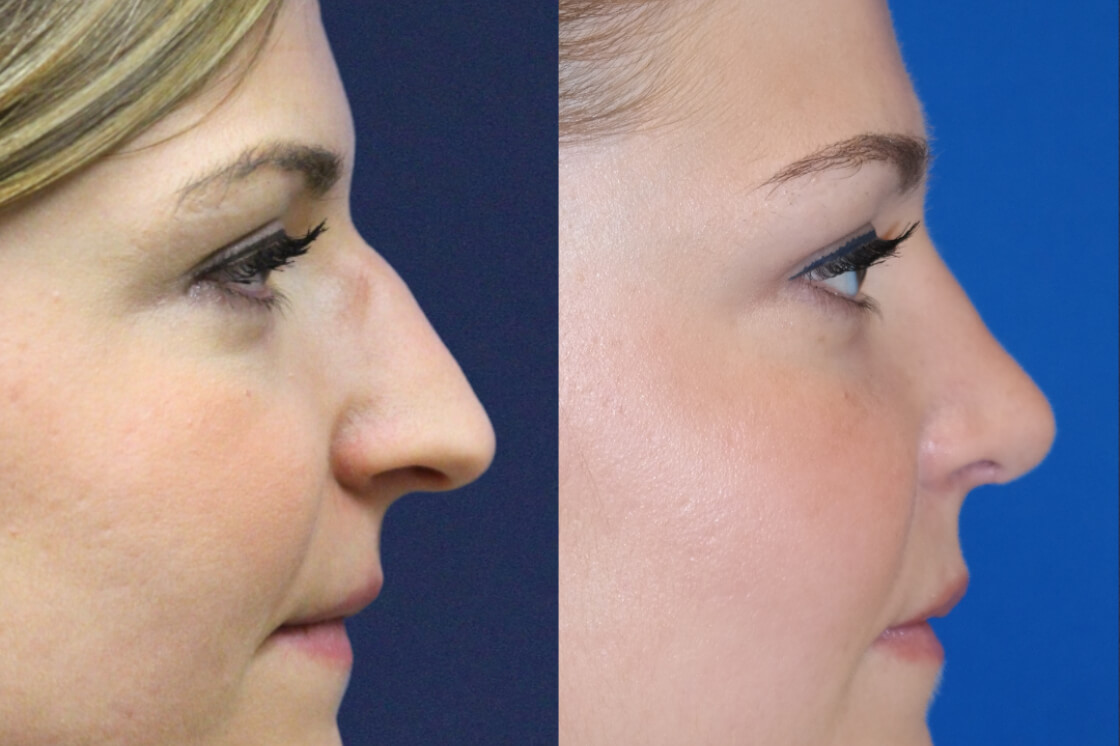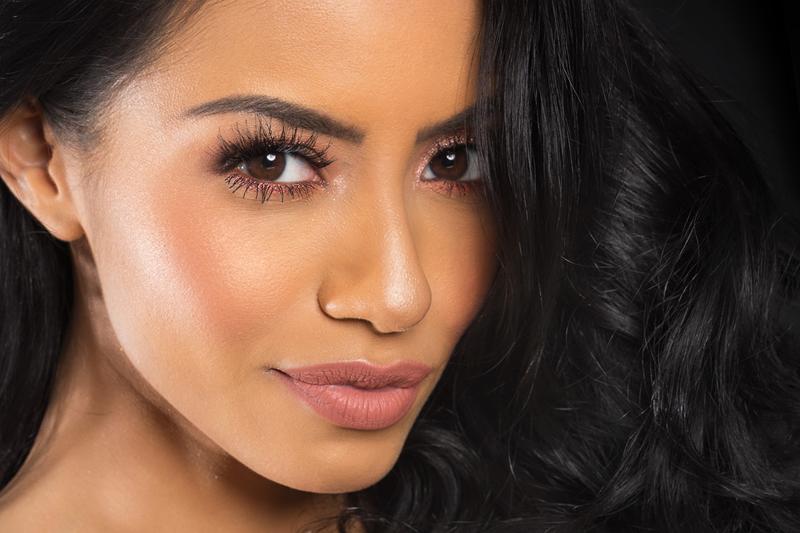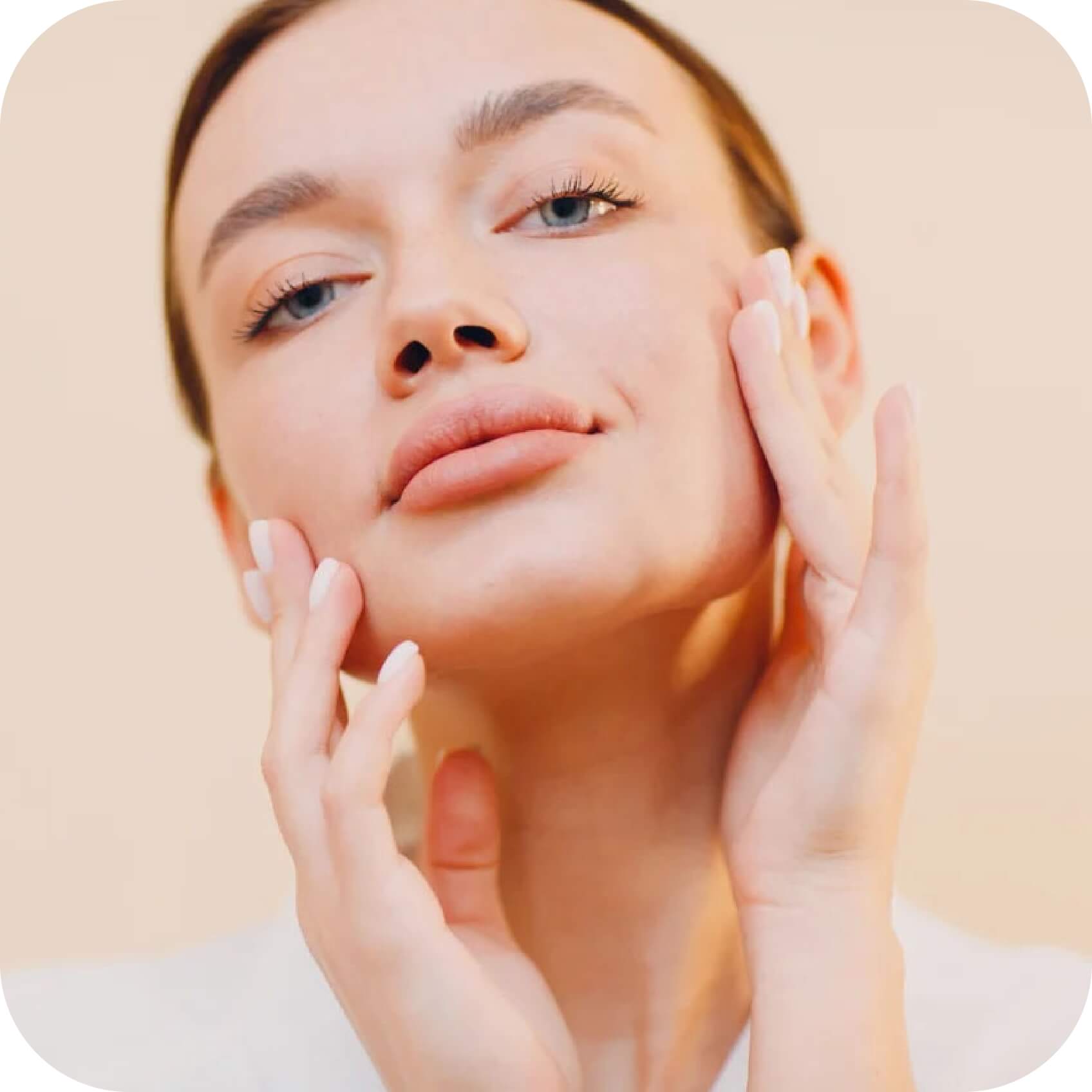Ethnic Rhinoplasty
Conveniently located to serve the areas of New York, NY
Ethnic rhinoplasty, also known as an “ethnic nose job,” is a treatment that reshapes the nose to improve its appearance and/or functionality while preserving one’s natural and unique beauty. This procedure enhances the nose by making adjustments to the delicate network of bone, cartilage, skin, and mucous membranes to address structural or aesthetic issues. Ethnic rhinoplasty can address shorter, wider noses with less projection . (1) This procedure preserves your natural features to enhance your appearance. Because of the additional considerations required of an ethnic rhinoplasty procedure, it is important to choose an experienced surgeon with great attention to detail.
Dr. Jennifer Levine is well-known for her transformative treatments and is double-board certified by the American Board of Facial Plastic and Reconstructive Surgery and the American Board of Otolaryngology (head and neck surgery). She has performed more than 15,000 rhinoplasty procedures. She will personalize your procedure to address your specific needs and aesthetic goals.
Contact our New York office online or call (212) 517-9400 to learn more about how ethnic rhinoplasty can improve your appearance.
Contents
About Ethnic Rhinoplasty
Rhinoplasty remains a popular category of procedures, with specialists performing more than 47,300 in 2023. (2) Rhinoplasty comes in many forms; ethnic rhinoplasty specifically helps patients address a wide range of functional and cosmetic concerns, while thoughtfully preserving their unique features and cultural identity. Dr. Levine will consider your unique aesthetic goals and facial structure to personalize your plan and address a variety of concerns.
- Asian Rhinoplasty: Patients of East and Southeast Asian descent often present with lower nasal bridges, wider alar bases, and thick skin with minimal tip projection. Dr. Levine uses augmentation techniques such as cartilage grafting to build structure and increase tip definition while maintaining soft, natural transitions.
- African American Rhinoplasty: Common features may include a wider nasal base, thicker skin, and softer cartilage. Surgical approaches often include narrowing the nostrils (alar base reduction), refining the tip, and reinforcing the structure with cartilage grafts for better projection. Dr. Levine emphasizes subtle refinement that maintains ethnic identity.
- Hispanic / Latino Rhinoplasty: There is significant diversity within Hispanic/Latino patients, depending on regional and ancestral background. Common concerns include a bulbous tip, dorsal hump, or thick nasal skin. Dr. Levine customizes her approach by balancing structure and contour, often using cartilage support and meticulous tip refinement.
- Middle Eastern Rhinoplasty: Patients of Middle Eastern descent often seek reduction of a dorsal hump, improved tip definition, and correction of drooping tips. Dr. Levine carefully reduces prominent features while preserving the strong, elegant profiles that are common to this heritage.
Ethnic Rhinoplasty Techniques
While traditional rhinoplasty often involves dorsal hump reduction and tip refinement (tip plasty), ethnic rhinoplasty may require a broader range of techniques to accommodate the diverse anatomical characteristics that patients from different ethnic backgrounds may have. Dr. Levine can perform several rhinoplasty techniques to address the aforementioned concerns. Some of the techniques include: (3)
- Tip augmentation: Dr. Levine can improve the projection of the nose to improve the appearance of a flat tip.
- Dorsal augmentation: Dr. Levine can create a straighter bridge for a more balanced, harmonious appearance. (4)
- Alar reduction (alarplasty): Dr. Levine can reshape the nostrils to reduce their width and flare.
Ethnic Rhinoplasty Approaches
Dr. Levine can perform adjustments during an ethnic rhinoplasty with one of the two approaches:
- Open Ethnic Rhinoplasty: During this approach, Dr. Levine makes incisions on the columella–the strip of tissue between the nostrils–to adjust the underlying nasal structures. Dr. Levine typically chooses this approach when patients require more extensive changes, as it allows more direct access to the underlying cartilage.
- Closed Ethnic Rhinoplasty: Dr. Levine can make discreet incisions that are completely hidden inside the nostrils during a closed ethnic rhinoplasty. The less invasive nature of a closed ethnic rhinoplasty often allows for a shorter recovery. This approach is best for less complex modifications. (5)
Ethnic rhinoplasty typically takes 1.5-3 hours, depending on the complexity of your treatment plan. Some patients require longer treatments that last 2-4 hours. During your consultation, Dr. Levine will let you know how long your procedure will likely take.
Septoplasty
Many ethnic rhinoplasty procedures are performed alongside a septoplasty, especially if the patient has a deviated septum. During a septoplasty, Dr. Levine can make changes to the cartilage that divides the nasal cavity to improve airflow and straighten the nose. (6) Anterior septal reconstruction (ASR) (7) is a technique that is sometimes performed during septoplasty that removes a portion of the septum and uses cartilage grafting techniques to replace it.
Candidates
Candidates for ethnic rhinoplasty include individuals seeking to address cosmetic and/or structural concerns related to the nose while preserving the unique features of their identity.
Ideal candidates are nonsmokers in good overall health with realistic expectations. Smokers must be willing to quit for a specified period before and after surgery.
Patients should have sufficiently developed facial structures, be emotionally prepared, and be pursuing surgery for personal–not external–reasons. Commitment to following pre- and post-operative care instructions is essential to ensure safe healing and optimal results. A thorough consultation with Dr. Levine is crucial to determine candidacy and align goals with achievable outcomes.
Consultation
During your consultation, Dr. Levine will thoroughly examine your nose and facial proportions, taking into account your unique features and aesthetic goals. She will also review your medical history and discuss any functional concerns, such as breathing issues, to create a personalized surgical plan that enhances your appearance while preserving your cultural identity.
She will take the time to understand your goals and ensure you know what the expectations of your procedure should be. After developing a treatment plan, Dr. Levine will explain the details of the procedure, including potential risks, benefits, and the anticipated recovery process. She will also provide personalized preoperative instructions and answer any questions you may have at this time.
How to Prepare for Ethnic Rhinoplasty
To prepare for ethnic rhinoplasty, you should:
- Stop taking medications and supplements that thin the blood
- Refrain from smoking temporarily
- Arrange for someone you trust to drive you home
- Schedule time off work to recover comfortably
Recovery
After surgery, ethnic rhinoplasty patients will rest at our facility during a monitoring period before returning home. You will need someone you trust to drive you home and potentially assist you for the first 24-48 hours. Temporary bruising and swelling around the eyes are common after nose surgery. During your recovery, you should stay hydrated, eat soft foods, and avoid strenuous activities. We recommend that you take light walks to promote healthy blood flow. The following is a general timeline of what to expect after your ethnic rhinoplasty:
- Week 1: To support your nose’s new shape, you will receive a splint with bandages. Dr. Levine usually removes the splint after the first week. During this time, you should prioritize resting, sleep 7-8 hours each night, and limit physical activity.
- Weeks 2-4: Swelling and/or bruising typically subside significantly by this point, and you can resume light activities during this time with Dr. Levine’s approval.
- Months 1-3: Swelling will continue to subside, and your nose’s shape will become more pronounced. With Dr. Levine’s approval, you can resume more physical activities gradually during this phase of your recovery.
- Year 1: You can enjoy the full result after 1 year, since it takes time for your bone structure to adjust.
Dr. Levine will provide appropriate pain management medication to ensure that you are comfortable during your recovery.
Results
After undergoing ethnic rhinoplasty, you can enjoy a nose that is more aligned with your personal preferences. If you sought to address any functional concerns, you can breathe easier after Dr. Levine has made precise adjustments to your nasal structure. While full rhinoplasty results typically take a year to develop as residual swelling subsides, noticeable improvements appear much sooner.
Dr. Levine is a leader in her field and one of the few surgeons who are double-board certified by the American Board of Facial Plastic and Reconstructive Surgery and the American Board of Otolaryngology (head and neck surgery). She is a sought-after facial enhancement specialist with decades of experience helping patients achieve their aesthetic goals. Her expertise and attention to detail help patients achieve exceptional results that emphasize their natural beauty.
Corresponding and Combination Procedures
Revision Rhinoplasty
If you are considering an ethnic rhinoplasty and you have had a previous “nose job,” your procedure would fall into the category of revision rhinoplasty. This is a procedure that improves the results of a previous rhinoplasty. Because of the added complexity of this procedure, choosing an experienced surgeon like Dr. Levine is important to ensure that you achieve your desired look. Revision rhinoplasty is often performed to address cosmetic and functional issues caused by improper healing, scar tissue, or an inexperienced surgeon’s inadequate techniques.
We recommend that you wait one year after your original rhinoplasty to undergo a revision. The recovery process for revision rhinoplasty is typically longer due to the presence of scar tissue.
Non-Surgical Nose Job
A non-surgical nose job, also known as a liquid rhinoplasty, is a less invasive alternative to surgical rhinoplasty. Instead of making structural changes to the nose through incisions, Dr. Levine can use dermal fillers and PDO threads to redefine the nose. This approach is a great option for patients looking for a temporary solution for enhancing their appearance without committing to permanent surgical changes.
Cost of Ethnic Rhinoplasty in New York
The cost of ethnic rhinoplasty will depend on your specific treatment plan. We can provide you with a quote based on your unique concerns and goals during your consultation.
Contact our New York office online or call (212) 517-9400 to schedule your consultation and learn more about the costs associated with ethnic rhinoplasty.
FAQ
What is the difference between functional and cosmetic ethnic rhinoplasty?
Functional rhinoplasty focuses on improvements in breathing capability, addressing specific structural issues, while cosmetic rhinoplasty enhances your appearance.
How long does the recovery period after ethnic rhinoplasty usually last?
Most patients can return to normal activities after about two weeks, but it can take up to a year for swelling to completely subside.
Is ethnic rhinoplasty painful?
We administer anesthesia during rhinoplasty for a comfortable procedure. However, it’s common to experience swelling and/or bruising while your nose heals.
What makes ethnic rhinoplasty different?
Every rhinoplasty procedure is tailored to each individual, as everyone has a unique nose. During an ethnic rhinoplasty, the surgeon takes into account the patient’s defining features and makes adjustments that enhance their natural beauty and characteristics.
References
- Bergeron L, Chen PKT. Ethnic Rhinoplasty Techniques. Seminars in Plastic Surgery. 2009;23(1):16-21. doi:https://doi.org/10.1055/s-0028-1110097
- American Society of Plastic Surgeons ® Endorsed Partner. https://www.plasticsurgery.org/documents/news/statistics/2023/plastic-surgery-statistics-report-2023.pdf
- Bergeron L, Chen PKT. Asian Rhinoplasty Techniques. Seminars in Plastic Surgery. 2009;23(1):16-21. doi:https://doi.org/10.1055/s-0028-1110097
- Wright JM, Halsey JN, S Alex Rottgers. Dorsal Augmentation: A Review of Current Graft Options. Eplasty. 2023;23:e4. Accessed May 19, 2025. https://pmc.ncbi.nlm.nih.gov/articles/PMC9912050/
- Azzawi SA, Kidd T, Shoaib T. Closed Rhinoplasty: A Single Surgeon Experience of 238 Cases over 2 Years. Indian Journal of Otolaryngology and Head & Neck Surgery. Published online August 6, 2020. doi:https://doi.org/10.1007/s12070-020-01990-y
- Tao F, Feng Y, Sun B, Wang J, Chen X, Gong J. Septoplasty Effect on the Enhancement of Airflow Distribution and Particle Deposition in Nasal Cavity: A Numerical Study. Healthcare. 2022;10(9):1702. doi:https://doi.org/10.3390/healthcare10091702
- Suk S, Lee TH. Analysis of the Effectiveness of Anterior Septal Reconstruction in Asians. Facial Plastic Surgery & Aesthetic Medicine. Published online March 11, 2024. doi:https://doi.org/10.1089/fpsam.2023.0215
